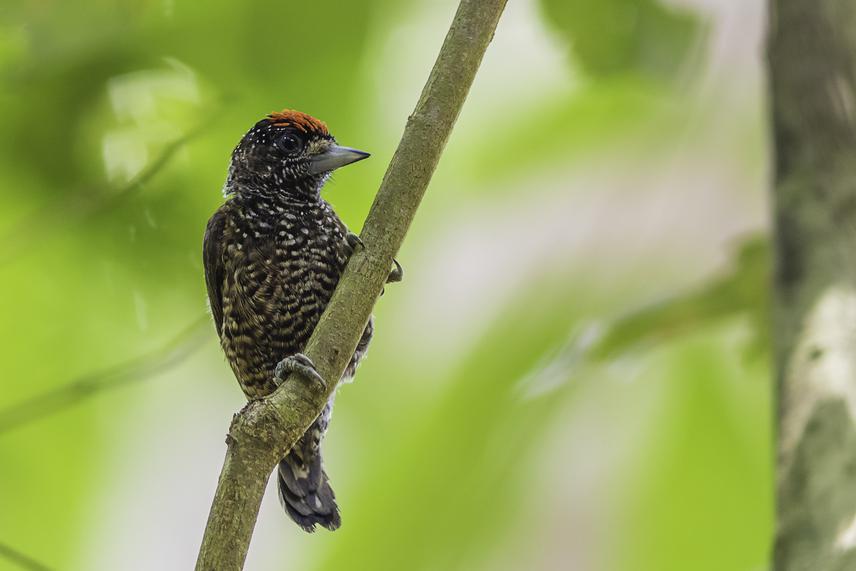Thiago Orsi Laranjeiras
We seek critical data on occurrence of threatened or near-threatened bird species that are typical of Amazonian flooded forest ecosystems.

The endemic, range-restrict and threatened Picumnus varzeae or Varzea Piculet in the Rio Amazonas, near Itacoatiara.
Amazonian flooded forest is a severely threatened ecosystem in northern South America. Deforestation already reached about 50% in some regions and the situation is worse, considering plans to construct dozens of hydroelectric dams in the next years. With this, more than 15 Amazonian flooded-forest specialized bird species have been listed as threatened or near-threatened with extinction. Unfortunately, data on occurrence and occupation for the most of these birds are scarce, and the correlations between these parameters and variable features of the flooded forest and landscape are poorly understood, limiting assessments of population declines and adequate conservation actions.
This project seeks critical field data of occurrence and occupation for flooded forest specialized bird species that have been listed as threatened or near-threatened with extinction. These data comprise patterns of presence-absence of bird species along natural gradients of characteristics of flooded forest ecosystems, based on standardized field surveys in key regions (confluence of major Amazonian rivers at the Central Amazon). Correlations between species occurrence and variables of flooded forest will allow more robust and precise assessment of population status and declines for these birds, indicating their vulnerability in the face of potential alterations of flooded forest conditions. Moreover, these field data will feed more consistent models of geographic distribution, in turn resulting in more accurate estimates of the proportion of distributions of these bird species inside protected areas (of different levels of protection), and, finally, in more precise indications of priority areas. All our analyses will indicate where conservation actions are priority, subsidizing decisions.
Specifically, our objectives are:
(i) to search for flooded forest threatened and near-threatened bird species in Madeira and Amazon rivers, through standardized surveys;
(ii) to identify correlations between occupation of these species and variable features of the flooded forests ecosystems;
(iii) to generate geographic distribution models for these species;
(iv) to identify conservation gaps;
(v) to identify priority areas for conservation actions.